Bugatti Bolide
Under the motto “What if…” Bugatti announced a vehicle presentation in the last few days, which has now culminated in the Bolide. In contrast to the hypercar Chiron, which is deliberately designed for comfort and high speed, the Bolide is intended to deliver top performance on the race track. For this purpose, the power-to-weight ratio was reduced to an extremely impressive 0.67 kilograms per horsepower. The only common features with the Chiron are the eight-liter W16 engine with quadruple turbocharging, the seven-speed double-clutch transmission and the four-wheel drive. However, the engine was given a power boost to 1,360 kW/1,850 hp and 1,850 newtonmeters of torque. To achieve this, the intake and exhaust systems were de-throttled and new turbochargers with optimized blades were installed. On the other hand, the radical vehicle only weighs 1,240 kilograms. According to internal calculations, the topspeed is over 500 kph (310 mph). A lap time of 3:07.1 minutes is theoretically possible on the 24 Hours of Le Mans circuit, and 5:23.1 minutes on the Nürburgring Nordschleife.
How did the Bugatti Bolide come about?
Stephan Winkelmann, CEO of Bugatti, sums up the history of the Bugatti Bolide as follows: “Bugatti stands for the continuous quest for technological innovations – in alignment with the company’s brand values of excellence, courage, dedication. And Bugatti never stands still. We are perpetually aiming for new and exciting goals, and the question that we always keep in mind is: what if? We asked ourselves how we could realise the mighty W16 engine as a technical symbol of the brand in its purest form – with solely four wheels, engine, gearbox, steering wheel and, as the only luxury, two seats. Important aspects of our considerations were fine-tuning our iconic powertrain without any limitations as regards the weight-to-power ratio. These considerations resulted in the Bugatti Bolide. An uncompromising experiment, a thoroughbred, a Pur Sang that, in its brute exclusivity, impresses above all with high performance, low weight, and a driving experience in a whole new dimension. Driving the Bolide is like riding on a cannonball.”
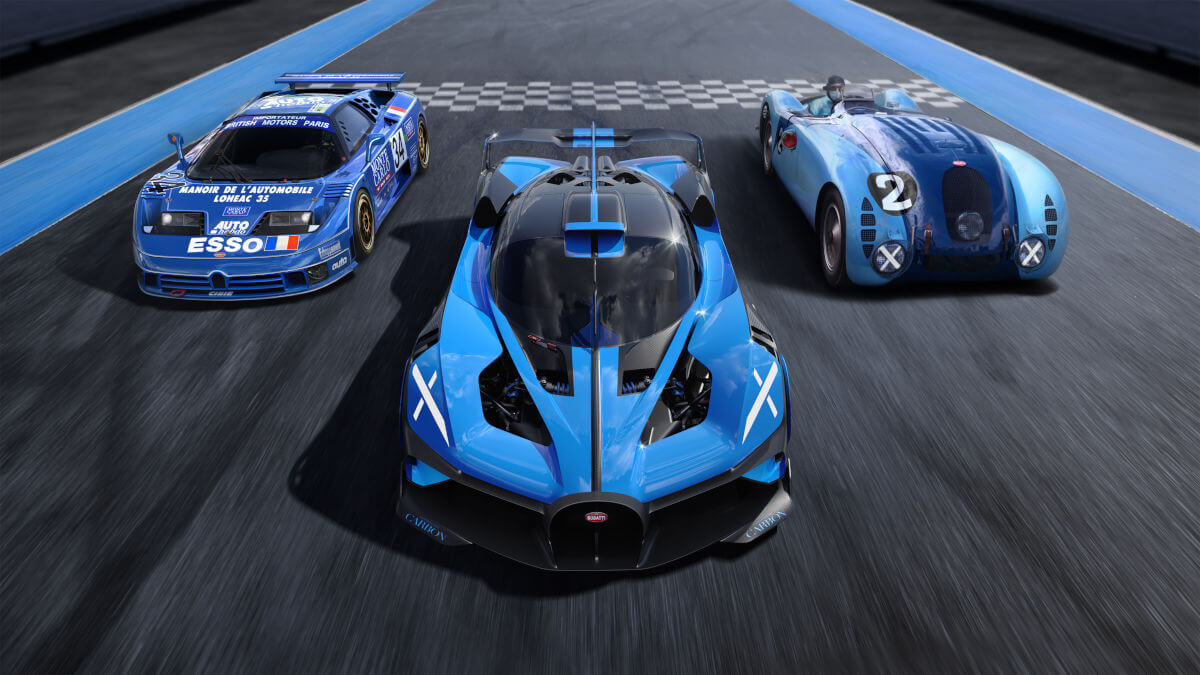



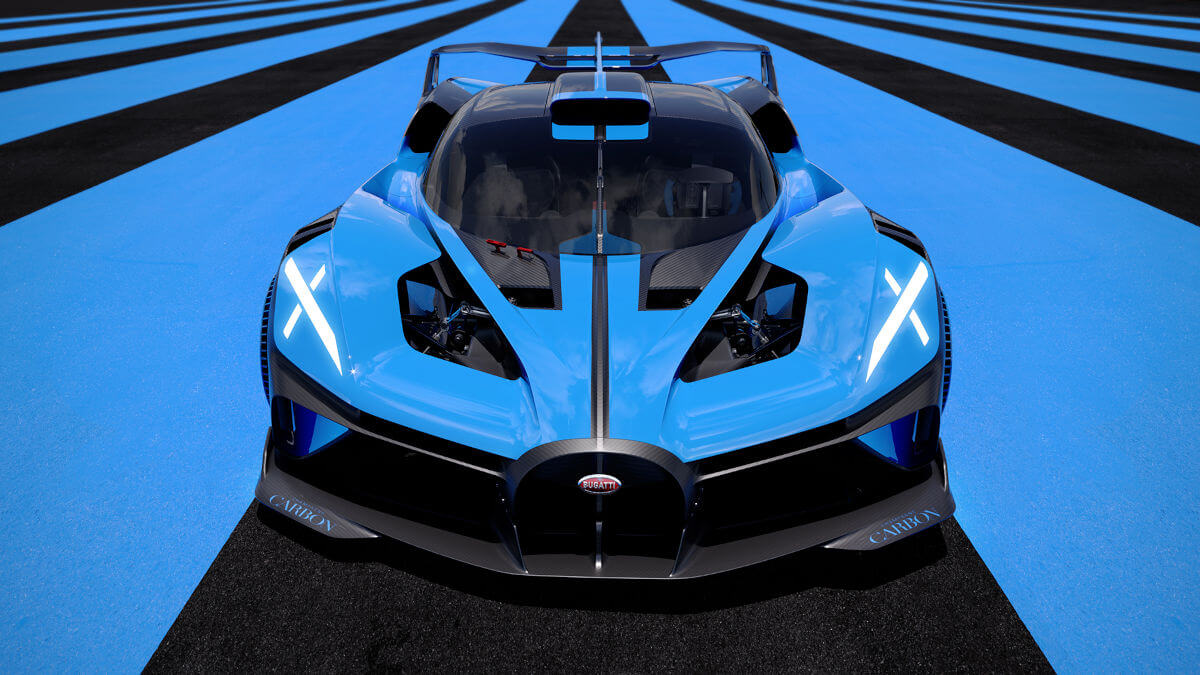











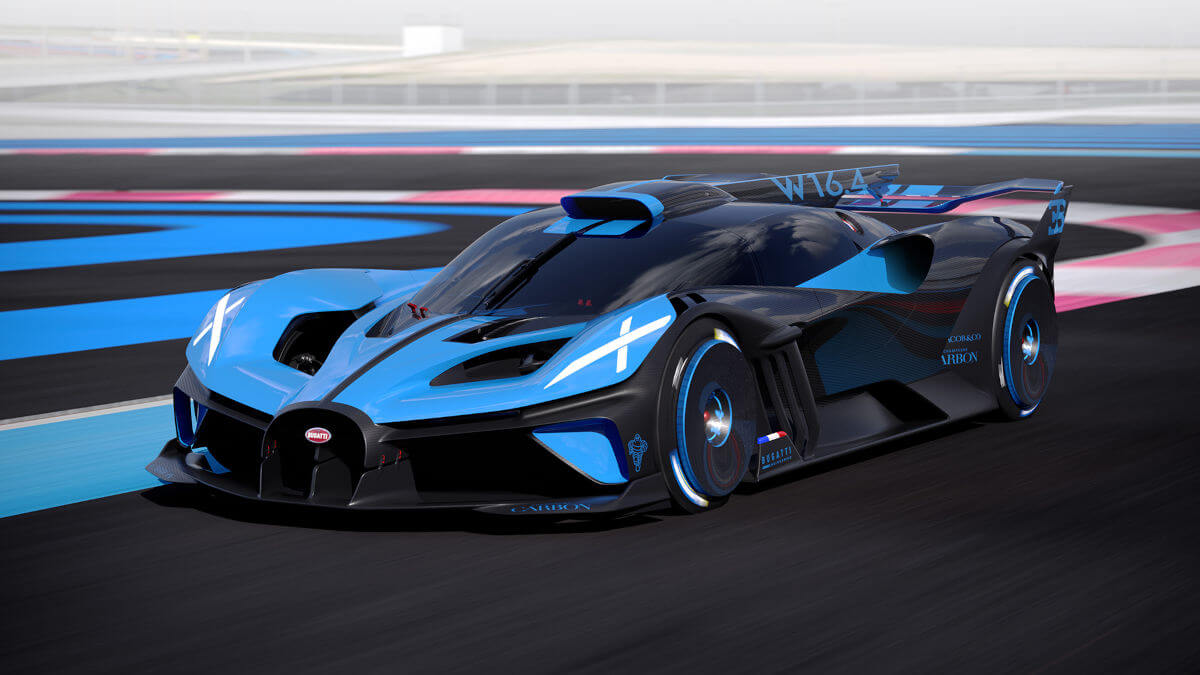







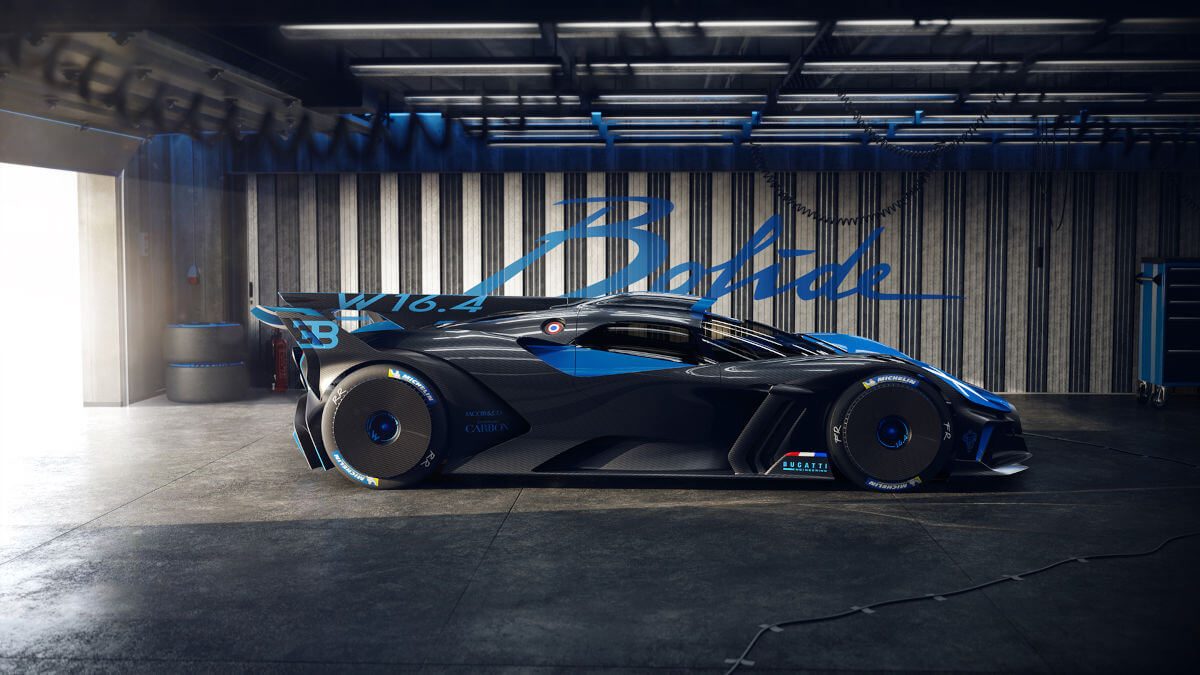















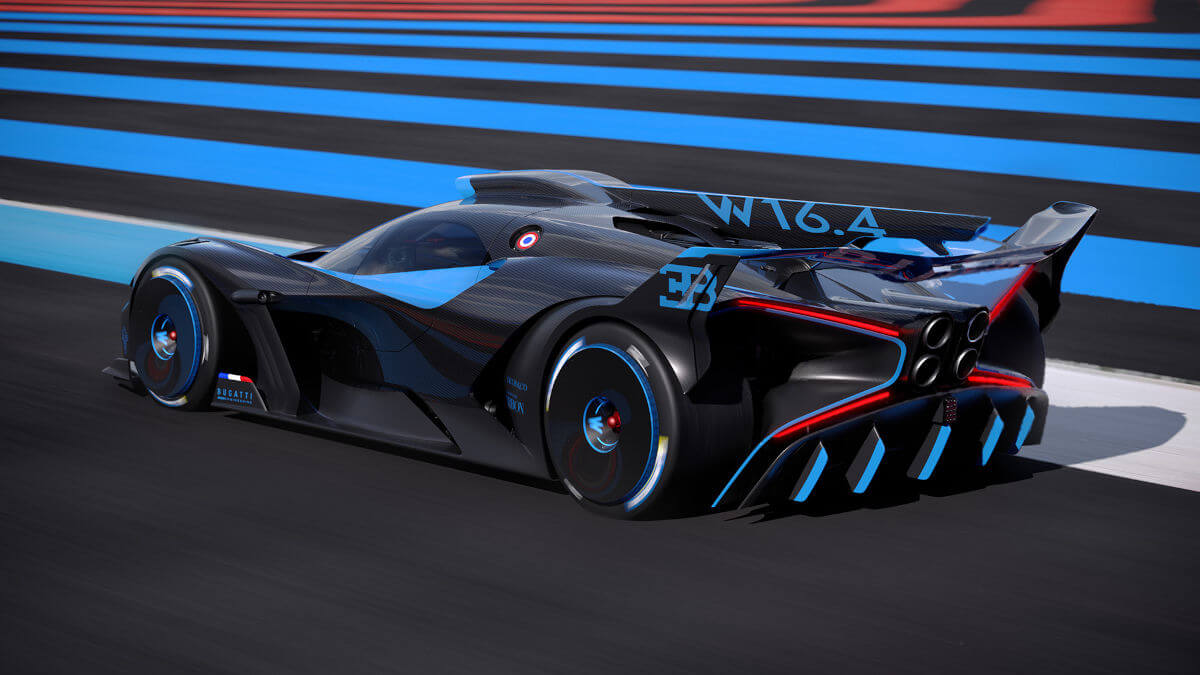



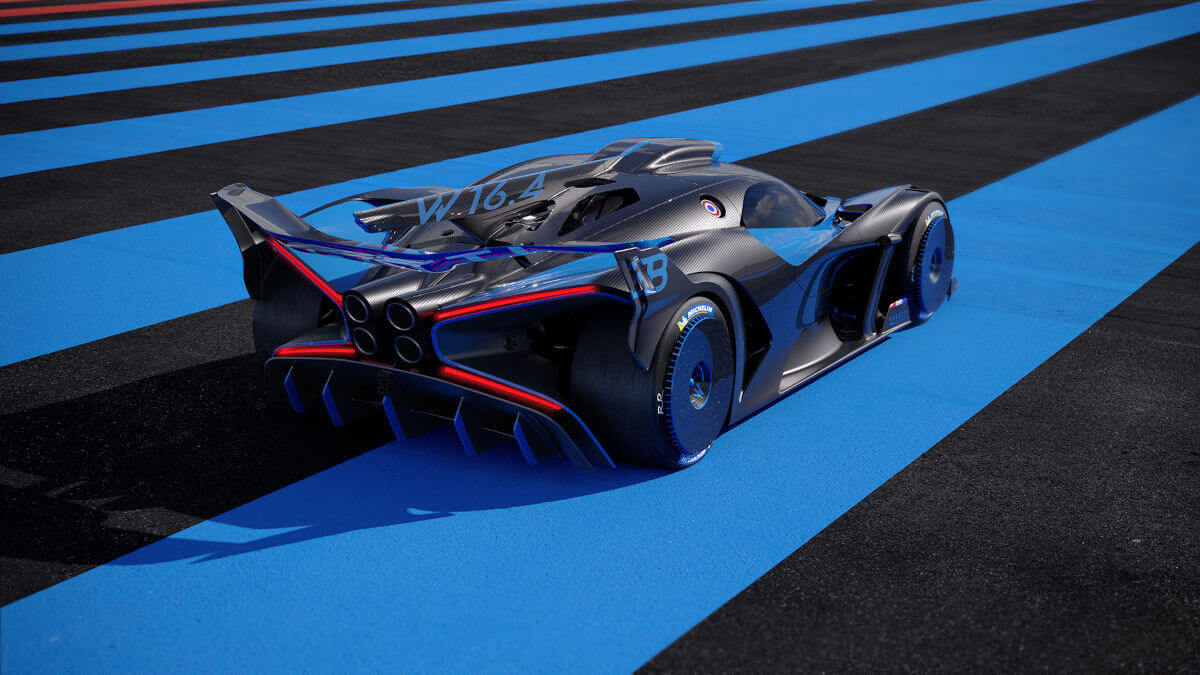







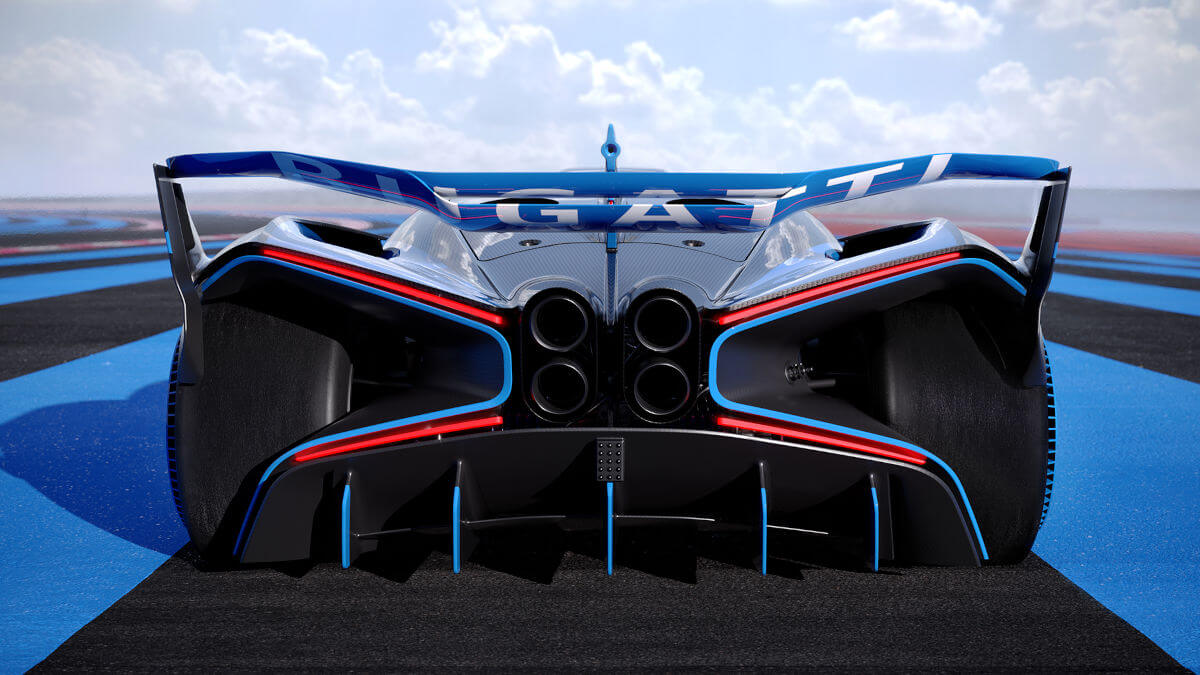



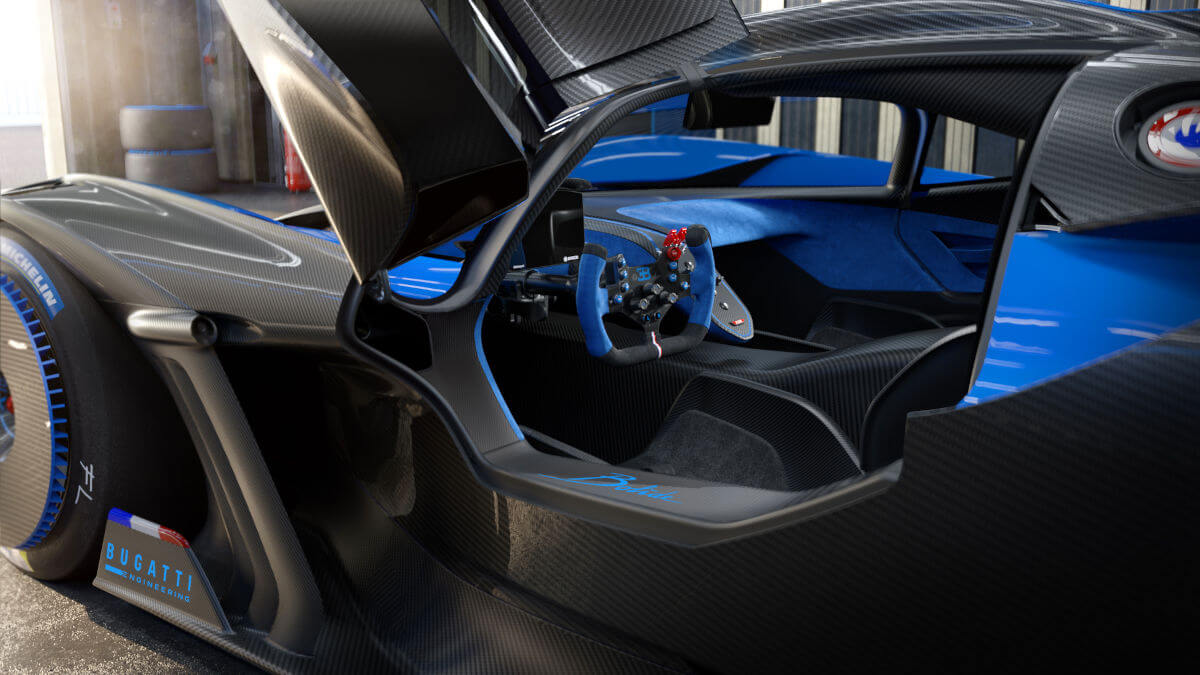







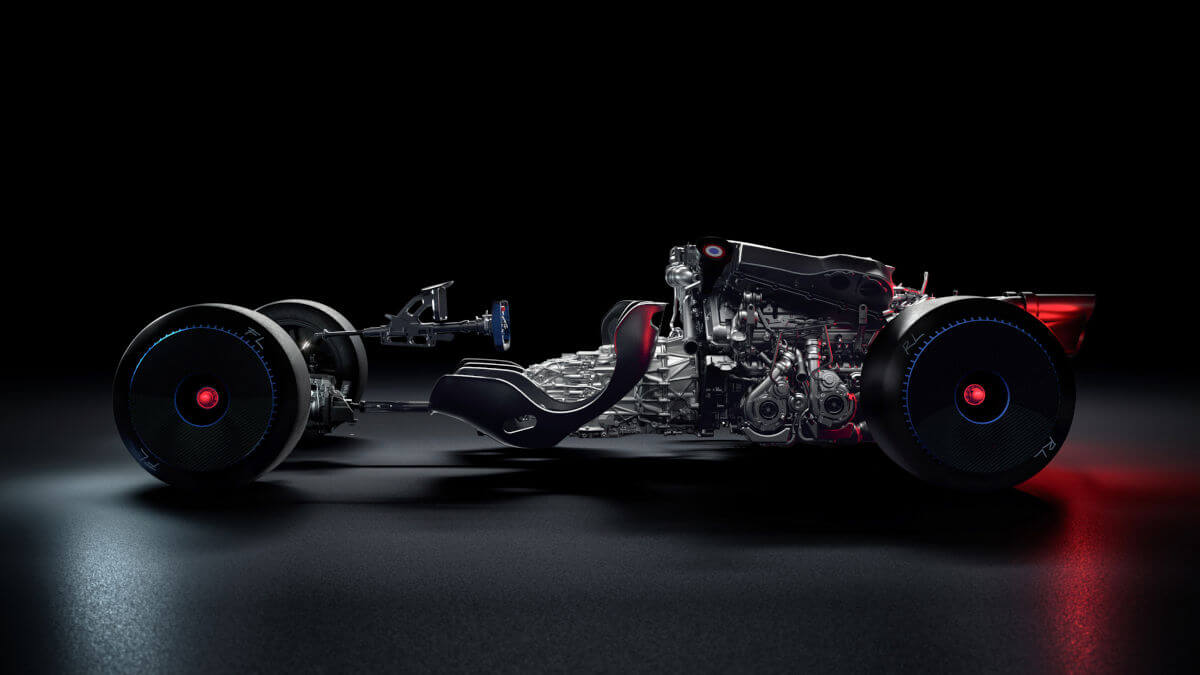



In addition to the minimum size of a body, the Bolide was equipped with all the safety features required by the FIA, such as a fire extinguishing system, six-point seat belts or HANS compatibility, in order to theoretically be able to compete in motorsports as a hypercar. For the team around chief engineer Frank Götzke, special attention was paid to the fact that the Bugatti Bolide, as a carrier of ideas and technology, offers a view of the near and distant future of the brand. To realize the low weight, all screw and fastening elements are made of titanium. A titanium alloy from the aerospace industry is used for various functional components, which are also produced with particularly thin walls using a 3D printer. For the half-meter-long drive auxiliary shaft, which transmits engine power from the transmission the rear axle, wound high-strength carbon fibers were combined with 3D-printed titanium end pieces. At the roof air scoop, the carbon body features a world first in the form of a morphable outer skin that extends in a bubble-like manner at high speeds, thereby reducing air resistance in this area by 10 percent. At the same time, downforce is reduced by 17 percent. Nevertheless, at 320 kph (198.8 mph), 800 kilograms of downforce are applied to the front spoiler and 1,800 kilograms to the rear wing.
Pure-bred racing car
A carbon-ceramic brake system is concealed behind the magnesium forged light-alloy wheels with central locking systems. The treadless racing slicks themselves are 340 millimeters wide at the front and 400 millimeters wide at the rear. To be able to change them easily, the car can be lifted by a pneumatic lifting system with four punches. A completely newly developed carbon fiber monocoque is located around the cockpit, which is designed for two passengers. Flanged to it is an integral front end made of carbon and a rear frame made of high-strength steel. As in most full-fledged racing cars, the underbody is completely covered. Overall, the Bugatti Bolide is exactly as high as the Type 35, namely only 995 millimeters – 300 millimeters lower than a Chiron. While the racing bucket seats are firmly bolted to the monocoque, both the pedals and the passenger footrest can be moved by 150 millimeters each.
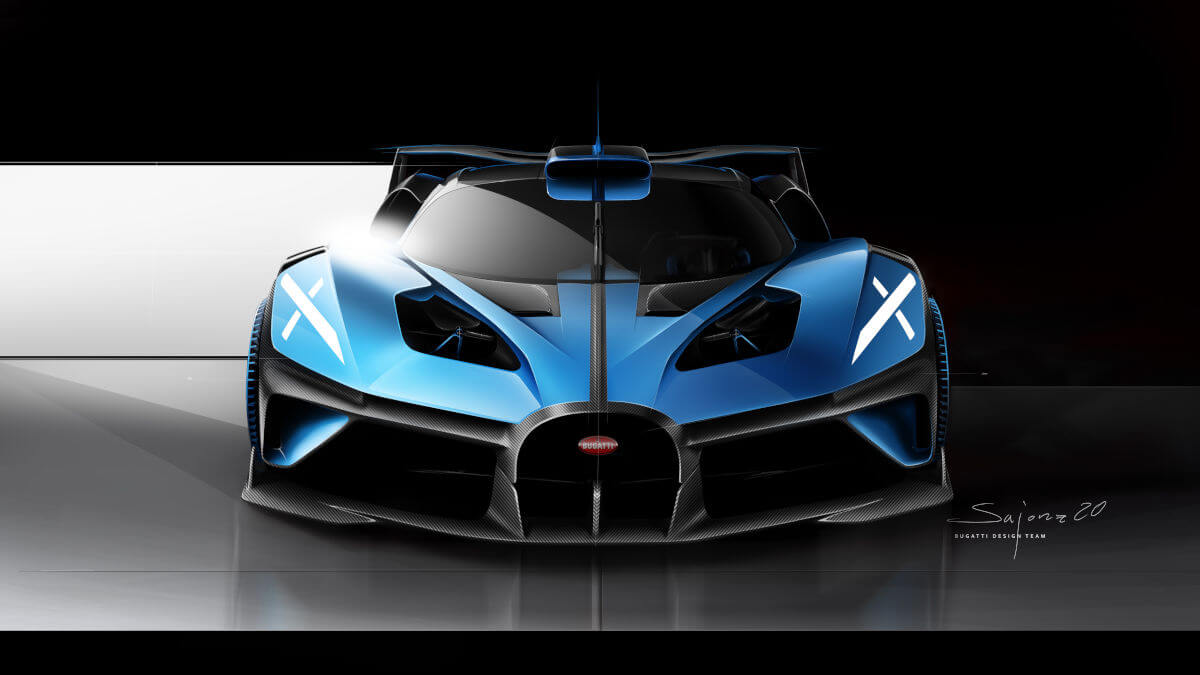







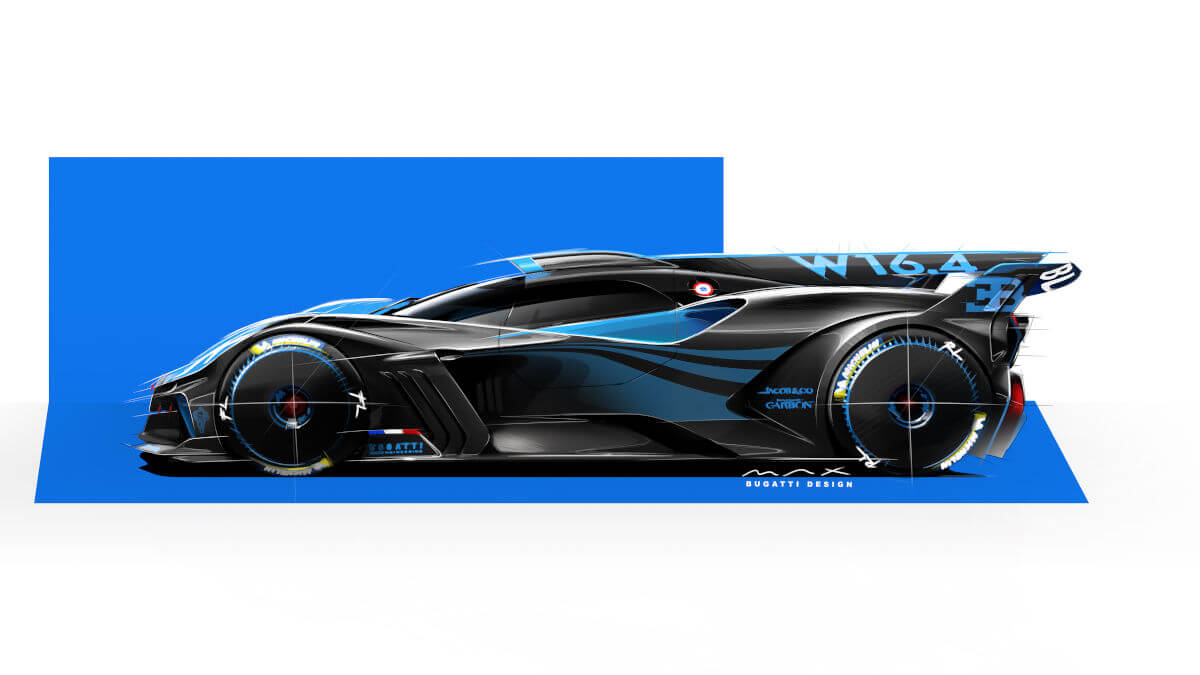



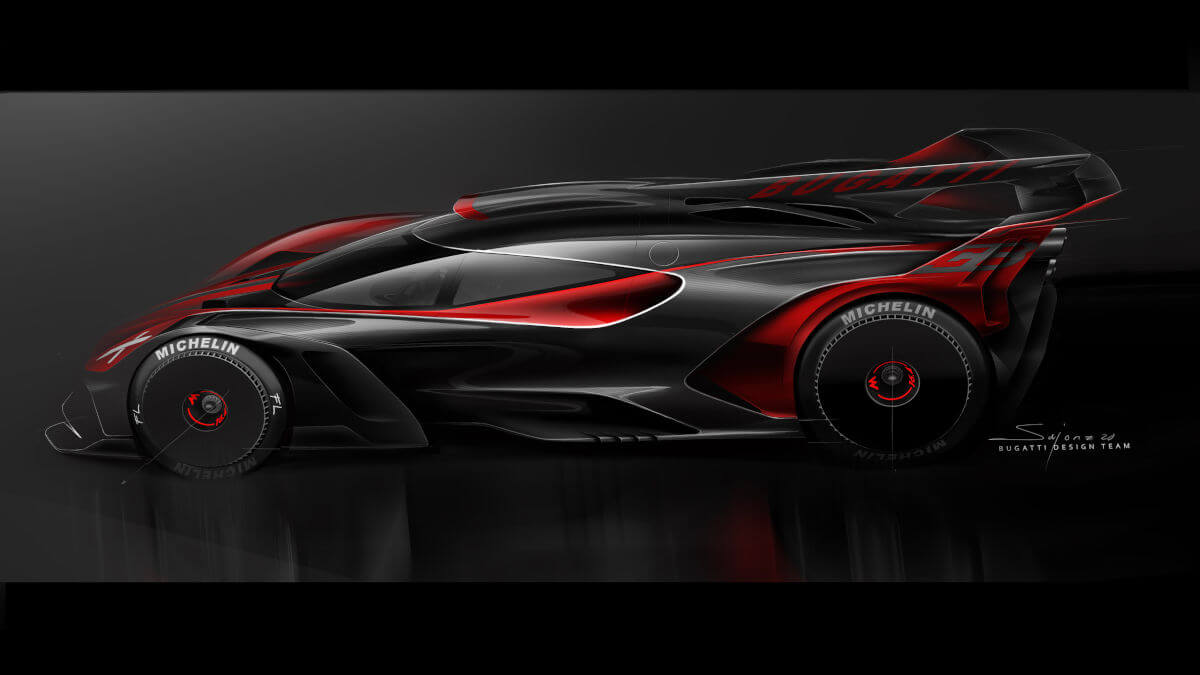



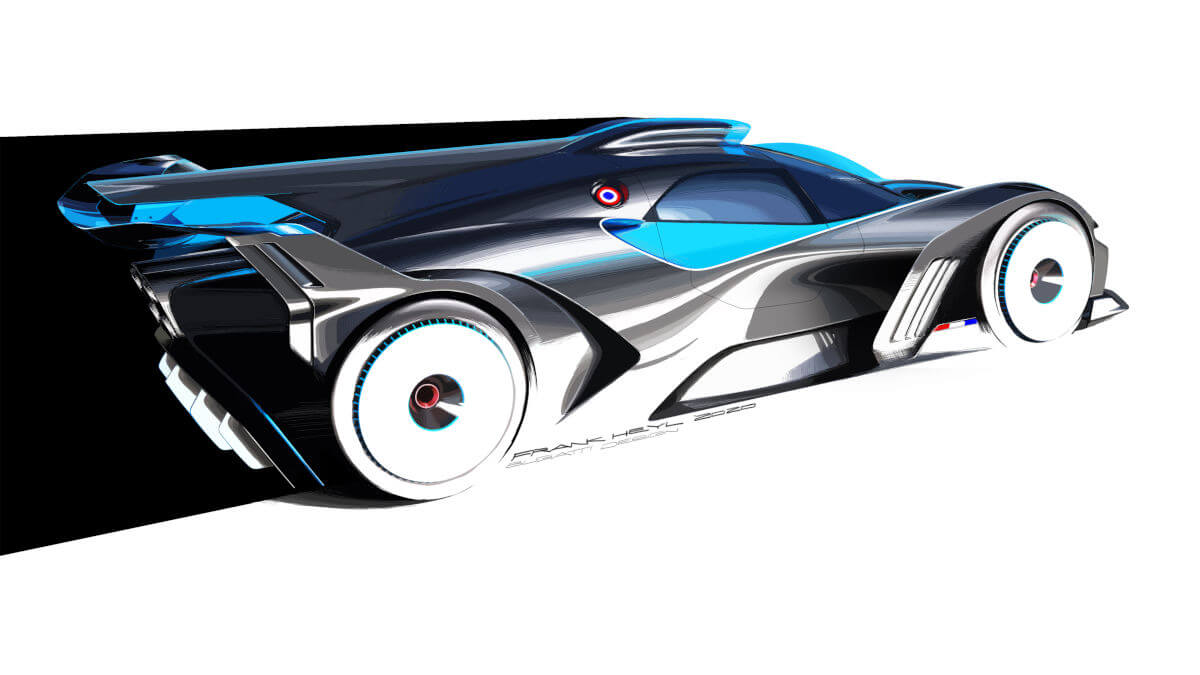



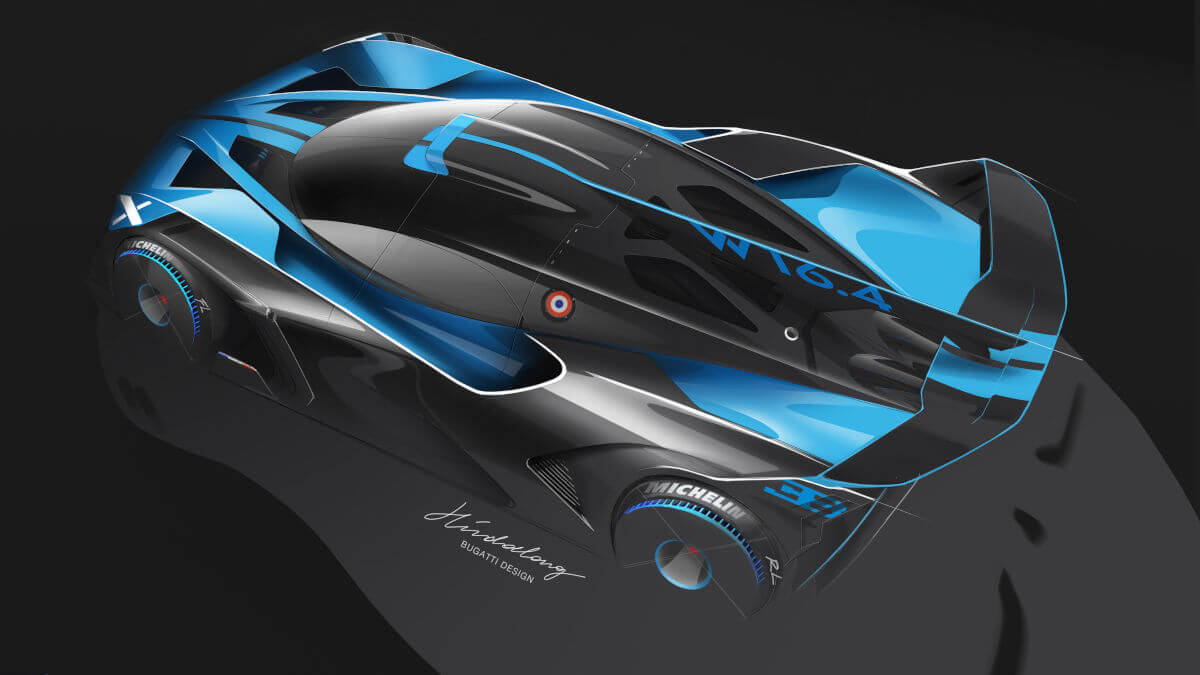



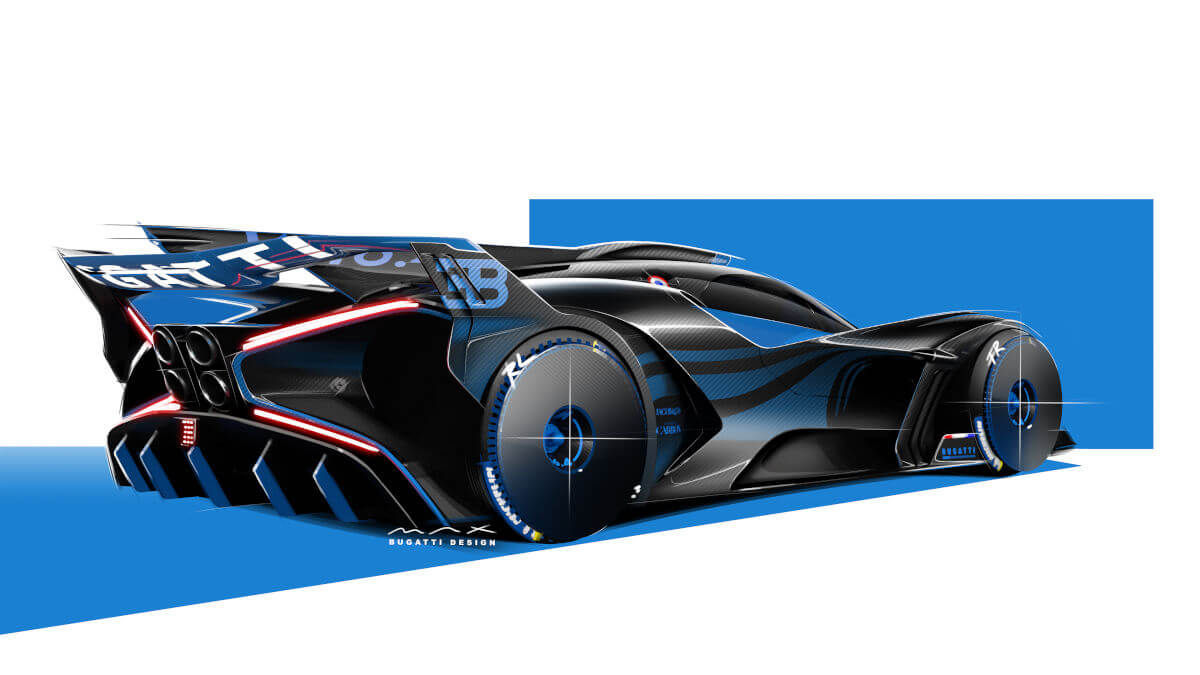







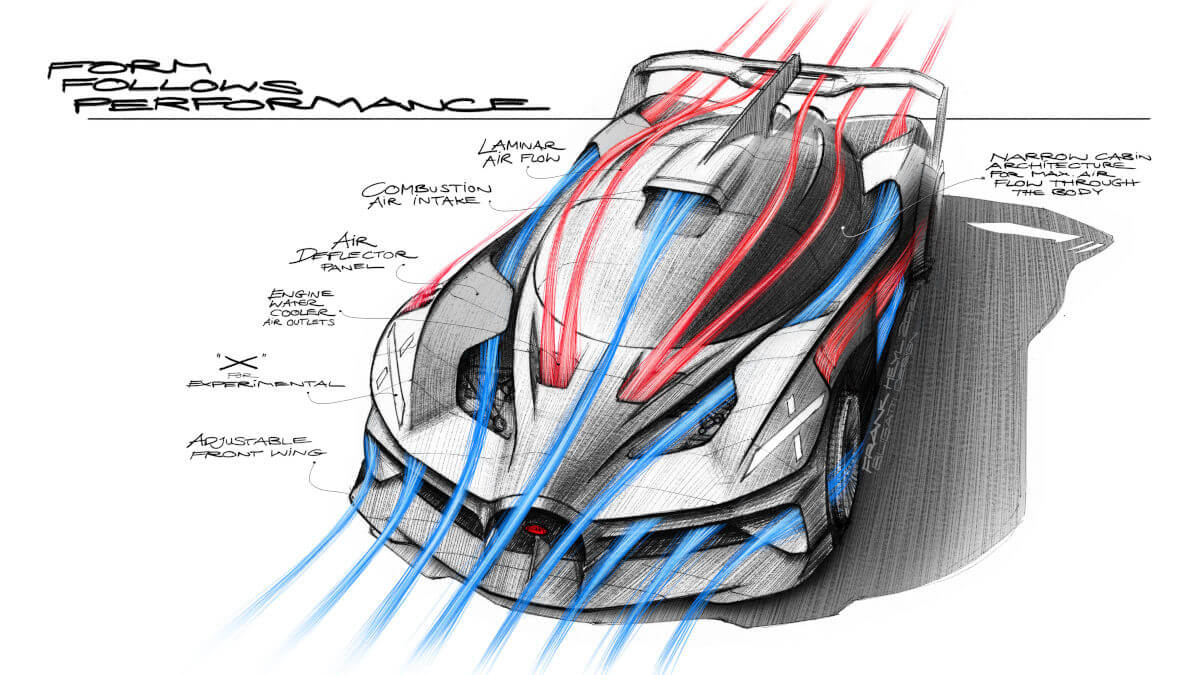







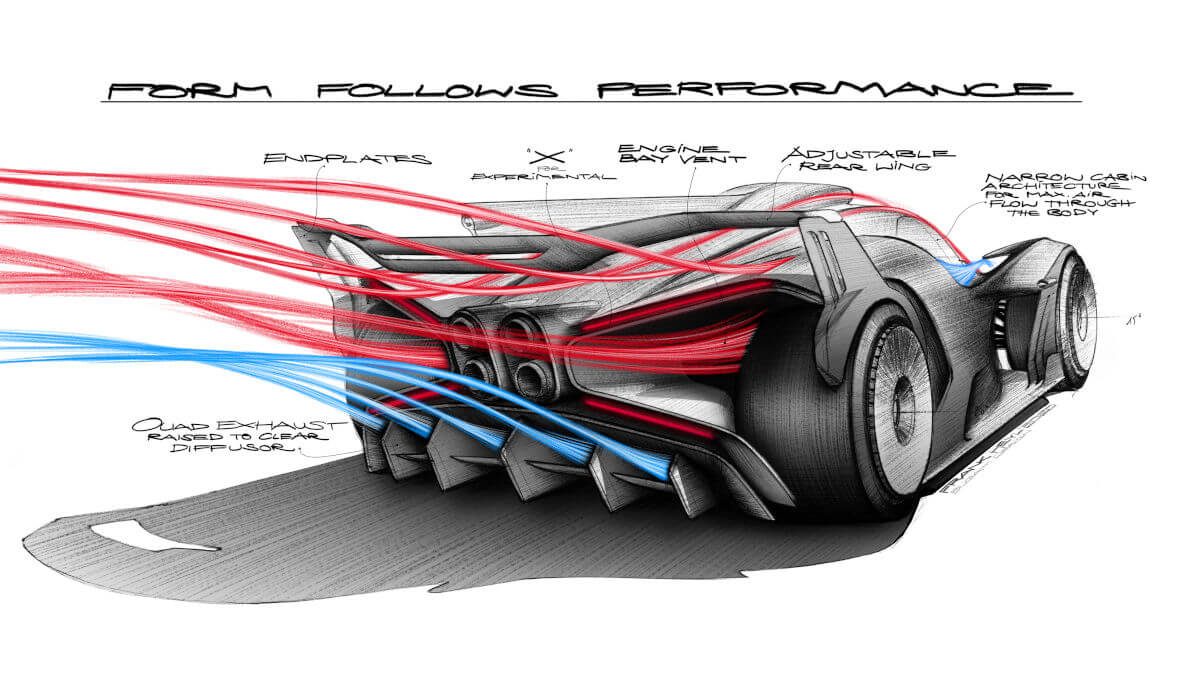







The body design was created in the Bugatti design studio under the direction of Achim Anscheidt. This was the first time that radical design ideas could be realized, as never before had such a minimalist concept been allowed to develop around the W16 engine. Accordingly, the motto ‘form follows performance’ was implemented with rare consistency. With an X-signature on headlights and taillights, the team not only quotes the X-shaped glued headlight protection strips on old racing cars, but also reminds us of XP aircraft, which for experimental purposes repeatedly raised the bar in aviation history. One example is the Bell X-1, with which Charles ‘Chuck’ Yeager broke the sound barrier for the first time in human history in 1947.
Chances of series production not excluded
Bugatti hasn’t yet decided whether or not the Bolide might go into small series production. However, there are likely to be some financially strong customers who want to put such a vehicle into their garages despite the fact that it isn’t registered for road use – if only because of the exhaust system, which is completely open for the first time and makes the raw power of the W16 engine audible.
Images: Bugatti




